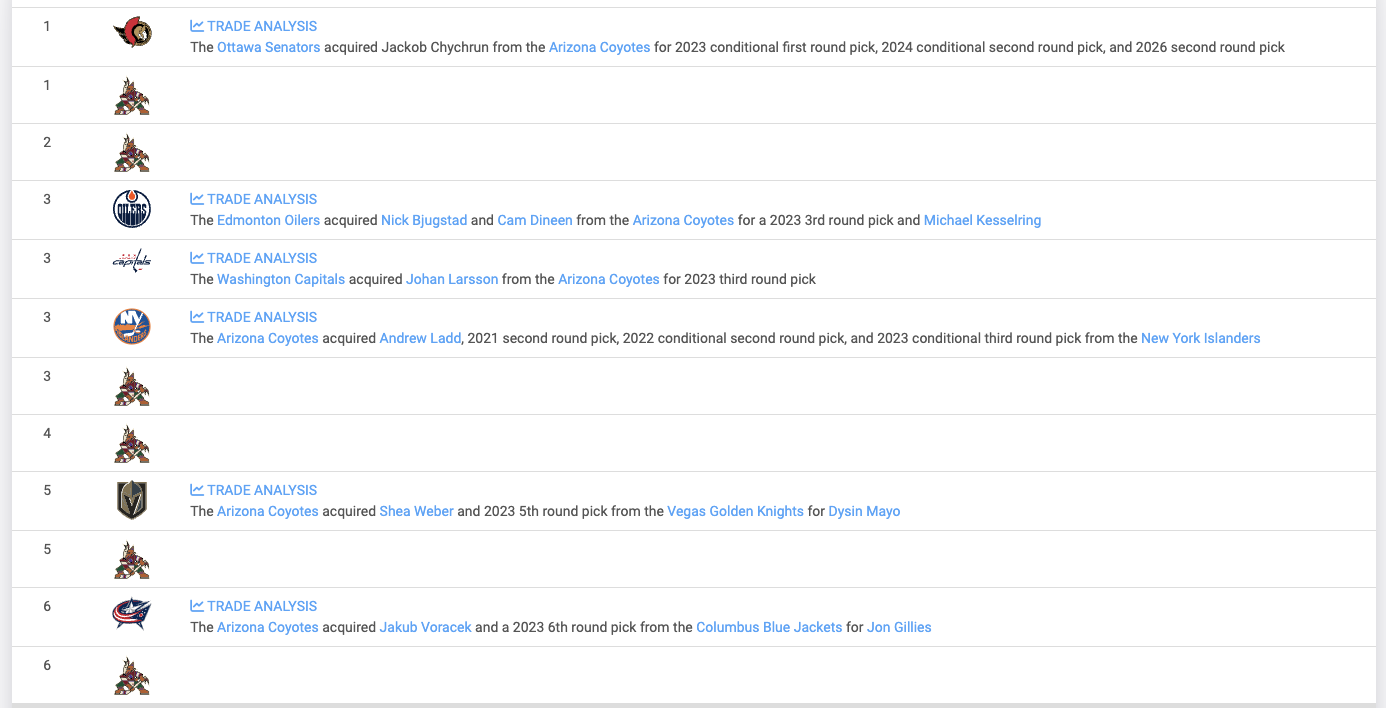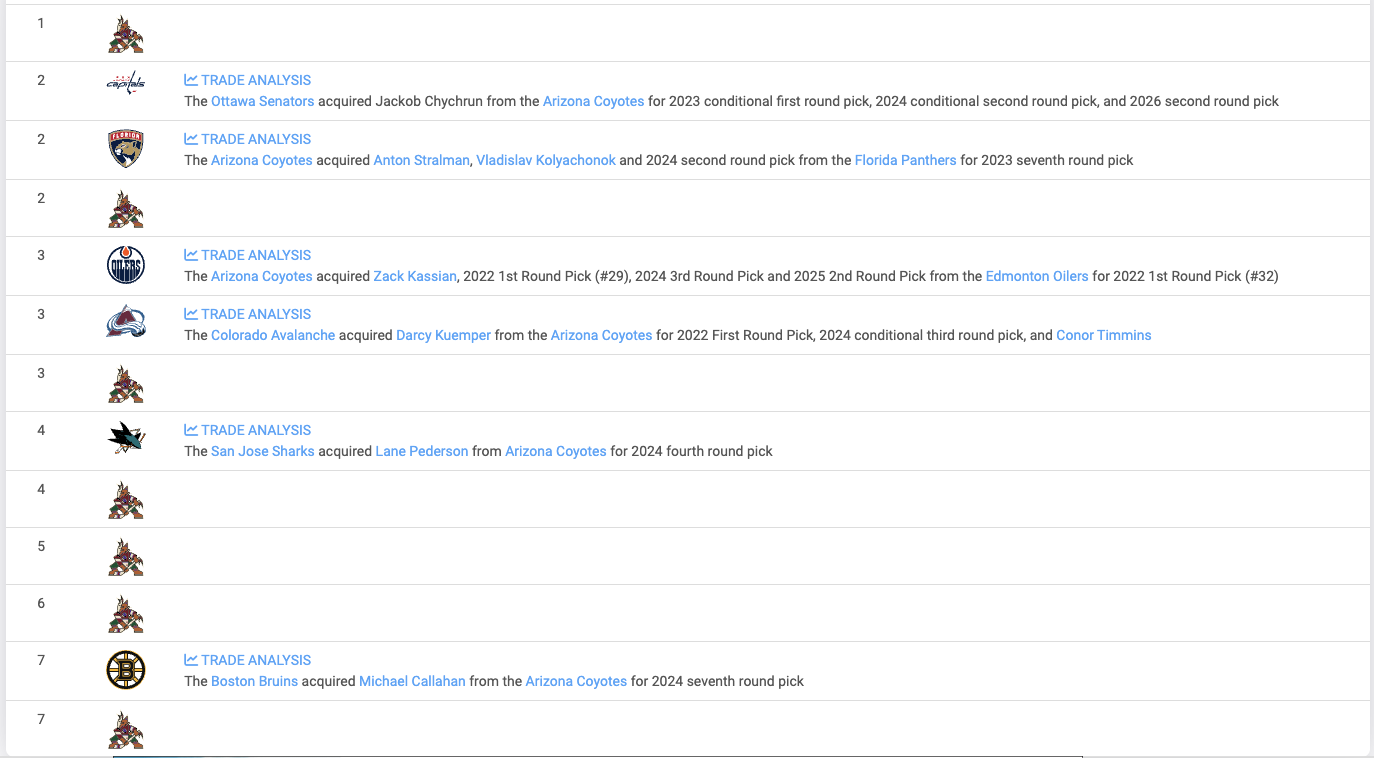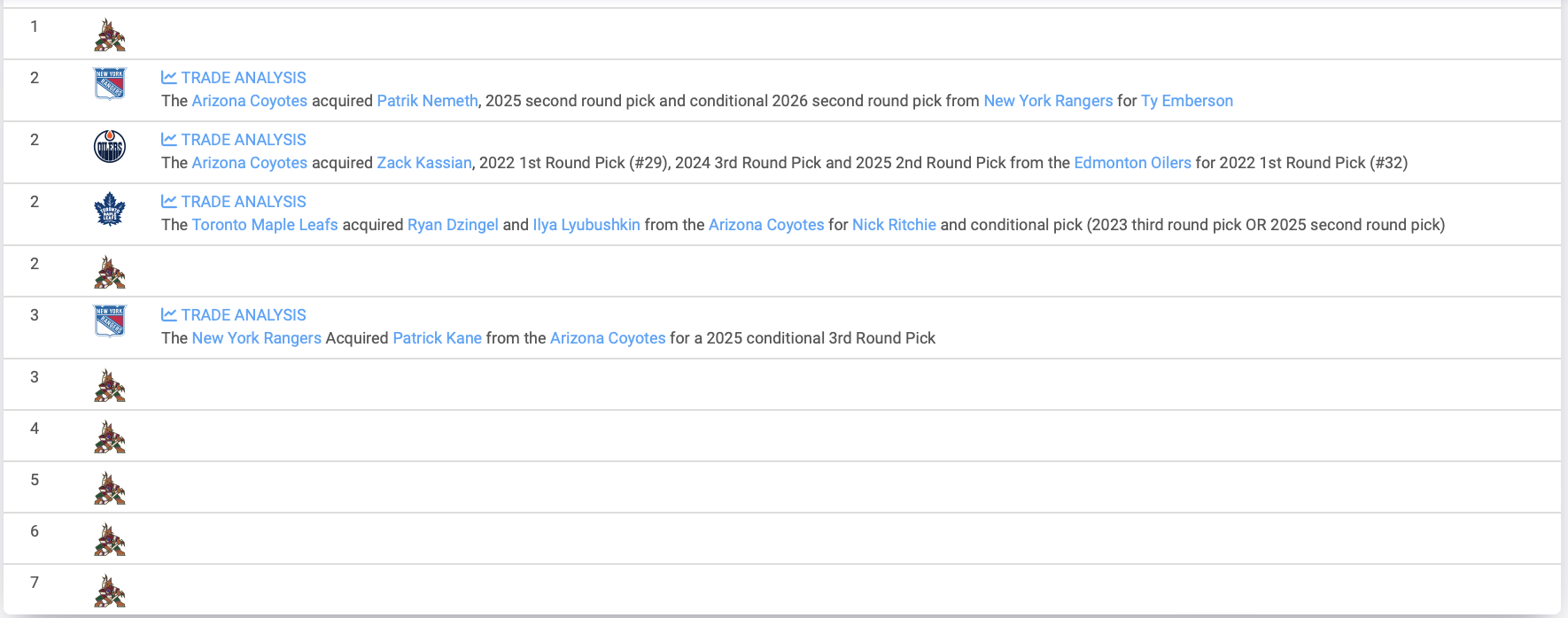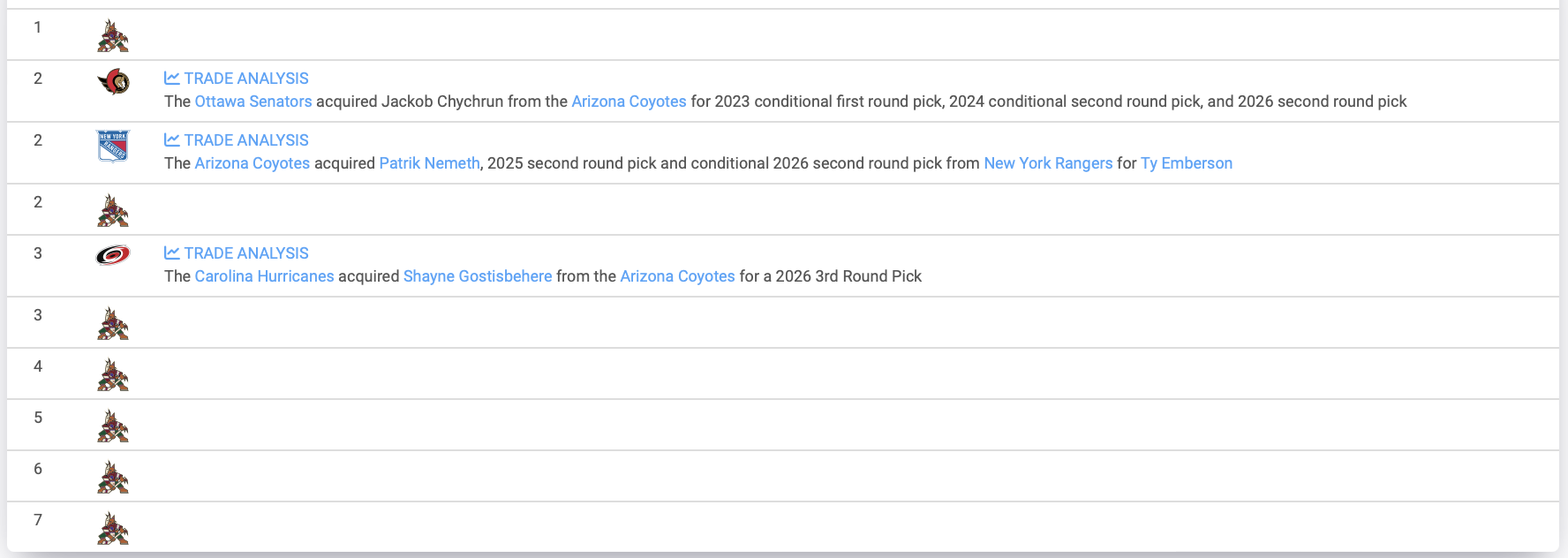© 2025 ALLCITY Network Inc.
All rights reserved.

When you think about the Coyotes’ 2023 NHL Draft plan, think of it in holistic terms. Having 12 picks in this draft — seven in the first three rounds — will certainly help the team take a big step forward in its rebuilding efforts, but it is just part of a bigger plan for GM Bill Armstrong.
That plan came into clearer focus on Saturday when the Coyotes acquired right-handed defenseman Sean Durzi in exchange for a 2024 second-round pick; the one that they acquired from Montréal in the Christian Dvorak trade that also netted them a 2022 first-round pick.
The Coyotes have been getting the word out that they will be browsing the aisles of the trade market this offseason, which often includes deals made on the volatile draft floor. While it is unlikely that Armstrong will trade the No. 6 and No. 12 picks in this year’s draft (unless it means moving down a couple spots and acquiring an additional asset), the Coyotes had nine second-round picks over the next three drafts (now eight), and nine third-round picks over the next three drafts. They want to leverage some of that draft capital for existing players and Durzi was the first domino to fall.
“We want to move forward with our group and have them drive our group organically where our best players play and we have fill-ins around them and we get value players until our young guys get to that point where they’re ready,” Armstrong said. “That doesn’t mean we’re not going to swing at younger guys that we think are going to fit in and can be there when we win a championship. We have no problem with that, but we’re not going to do dumb shit. We’re going to sign value players — good players — based on age and budget.”
Durzi is 24 years old and carries a cap hit of $1.7 million with a $2 million salary in 2023-24, the final year of his contract. Clearly, he can grow with the Coyotes’ core while growing his game.
Last season, he had nine goals and 38 points (16 on the power play) in 72 games while averaging 19:47 of ice time (fourth among Kings defensemen). Some analysts describe Durzi as a high-risk player who will make mistakes in his own end and must shore up the defensive side of his game, but he’s a skilled puck mover who can help the power play where he logged the second most average minutes of any Kings defenseman other than Drew Doughty. At 24, Durzi has room for growth at a position that often takes a little longer to develop.
“This was about us trying to get that value where we could have someone who is about the same age as [JJ] Moser, the same age as Kells [Clayton Keller] and the same age range as Crouser (Lawson Crouse] so he can grow with the group,” Armstrong said. “We needed a power play guy because we moved out Ghost (Shayne Gostisbehere).
“He really is a no-nonsense forward puck mover where, boom, it just flies off his stick, but I think he can be our guy back there on the power play, too. He’s got a great shot from the point. We think he can have some impact and the other thing about him is he kills penalties. We think he can grow into that top-four range and play over 20 minutes and have good value for us.”
Armstrong declined to speculate on whether there could be more moves ahead, but it’s a safe assumption with only 31 of the team’s maximum of 50 contracts (including AHL) currently filled, including this weekend’s signing of goaltender Connor Ingram to a three-year deal.
Some of those slots will be filled by the team’s own free agents (they have nine remaining RFAs and three UFAs) but the Coyotes could swing another trade with all that draft capital. They could also be active in free agency, even if this year’s class is considered a weak one. Just keep in mind that the Durzi trade does not signal that the Coyotes will be chasing big-name players or big-time contracts. First, Armstrong does not have the budget for such moves. The Coyotes will still be a low-budget team. Second and in most instances, it doesn’t make sense to add that type of player at this stage of the rebuild.
It also looks like the Coyotes are moving away from the approach of taking on bad contracts to also acquire draft assets. Armstrong said that he would not rule that out if he gets a terrific offer, but the bad contract era appears to be over for this regime.
There are a couple factors driving this overall shift in philosophy. First, the timing is right. When this draft concludes, the Coyotes will have increased their stockpile of prospects dramatically.
“Even though you’re not picking at one or two, you can get really two good players at No. 6 and No. 12 that can be staples for our organization for the next 10 years,” Armstrong said. “Listen, there’s no guarantees. You’ve got to pick the right ones. But the opportunity to do that with our staff and our experience gives us a really good chance to find players that can be difference makers for us as we move forward.”
The other factor to consider is the Coyotes’ core. The failed Tempe vote hit that group hard. They invested literal time in stumping for the arena and everything they were hearing internally was that it was going to pass. With uncertainty back on the table, it’s understandable that players such as Keller, Nick Schmaltz, Crouse and Christian Fischer want some clarity on the future of the franchise, and the impact of that vote on Armstrong’s plan. They don’t want to be caught in a rebuilding limbo for the better part of their primes.
Again, the timing for a shift in philosophy makes sense after three successive drafts of acquiring lots of player capital, but don’t discount the need to appease the core with some of these moves. And if the Coyotes can add a young, talented player to that core, all the better.
As for the draft, there are a number of options on the table with the No. 6 overall pick which I will discuss on Tuesday. The options grow exponentially for the No. 12 overall pick. If Armstrong does hang onto the team’s second-round pick and four third-round picks, look for the team to shore up its defensive prospect pipeline and maybe select a goaltender at that range of the draft.
“Having this many picks allows us to take some chances, and it allows us to take chances on skill,” Coyotes director of amateur scouting Darryl Plandowski said. “Maybe the kid is only five foot 10 and a half but we like the skill. We’ve got four picks in the third. If two of the four turn out, we’re way above average.
“If you get two players that play out of every draft, you’re above the average. So it just allows us lots of flexibility to trade, to keep it, to take goalies that just take time, to take young defenseman that take time. We have two firsts and a second but when that third round comes around, there’s always guys we like every year.”
The scouts will also be prepared for every scenario, including the one in which Armstrong deals away picks that the scouting staff thought it was going to execute.
“We meet five or six days before the draft and every scenario is talked about,” Plandowski said. “Ryan [Jankowski], myself, and some of the guys on the staff have been doing this for 20-plus years so you kind of know going into the draft who are going to be the first rounders, who’s going to be left there in the second round, and who has a chance to fall into the third round. You know the spots where certain guys will go so you can adapt.
“There’s all kinds of strategies that we talk about, potentially taking those seconds or those thirds and moving up to the second. There’s so many things that are possible and if they present themselves you just have to be ready.”
With draft capital clearly in play this season, here is a full list of the Coyotes’ draft picks for each of the next four seasons via PuckPedia.
2023

2024

2025

2026

Top photo of Sean Durzi via Getty Images
Follow Craig Morgan on Twitter
Comments
Share your thoughts
Join the conversation



